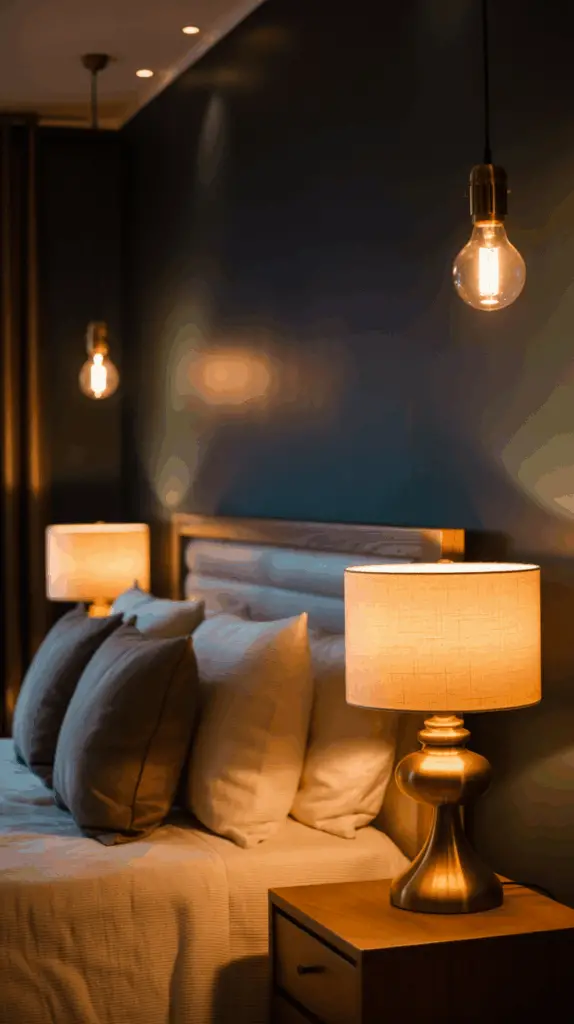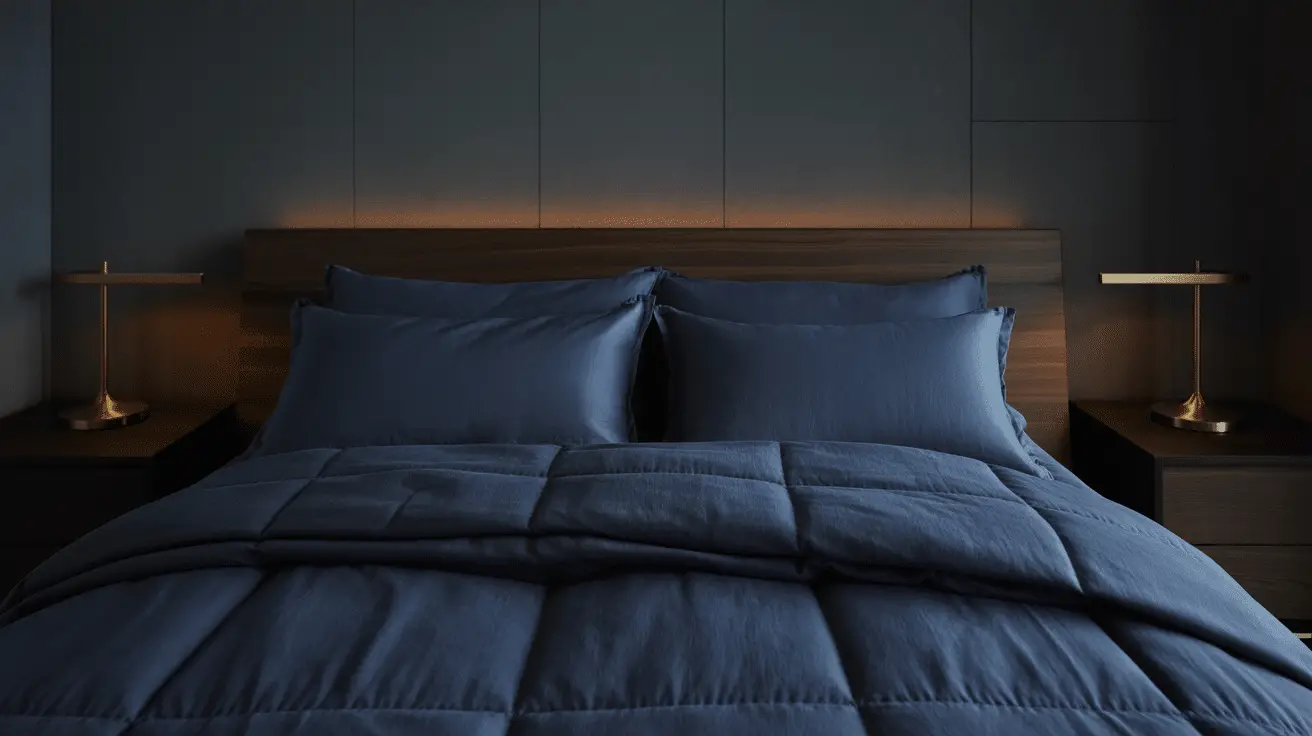Dark and Dreamy Moody Bedroom Ideas for Ultimate Relaxation and Comfort
Table of Contents
Introduction:
In today’s fast-paced world, creating a sanctuary in your own home is more important than ever. A space where you can unwind, relax, and recharge is essential for your mental well-being. One of the best ways to achieve this serene environment is by designing a bedroom that embraces the calming aesthetics of a moody, dark color palette. Dark and dreamy moody bedrooms are becoming increasingly popular for their ability to evoke a sense of tranquility and escape. These spaces, often rich in deep tones like charcoal, navy, and rich emerald green, serve as the perfect backdrop for relaxation and rest.
Whether you’re looking to embrace this bold design style or simply seeking ideas to incorporate moodier tones into your existing decor, this post will guide you through creating the ultimate relaxing environment. From choosing the right colors and materials to adding personal touches that elevate the atmosphere, these ideas will help you create a dreamy, calming retreat. By the end, you’ll have a variety of tips and inspiration to design a space where rest, relaxation, and rejuvenation come naturally.
1. The Power of Dark Colors: Setting the Mood for Relaxation
Dark colors are the cornerstone of a moody bedroom, offering a sense of intimacy, comfort, and relaxation. When used strategically, they can transform a room into a sanctuary that feels both cozy and inviting. Unlike bright, vibrant colors that can sometimes overstimulate, dark hues like charcoal gray, deep navy, and forest green are perfect for inducing calm and fostering a restful environment. These shades provide a peaceful backdrop, allowing you to relax without the distractions of overly bold or bright tones.
Incorporating dark colors doesn’t mean you have to cover every surface with deep hues. Instead, you can balance the intensity by using these shades as accents or feature walls, allowing light and airy elements to balance the space. Layering various shades of dark tones, such as a rich charcoal with a hint of deep blue or green, adds dimension and interest without sacrificing tranquility.
Here are a few ideas for using dark tones effectively in your bedroom design:
- Feature walls painted in deep, moody shades
- Dark-toned bedding, curtains, and throws for added texture
- Accent furniture like dark wood or black metal to create contrast
2. Choosing the Right Lighting to Complement Dark Tones
Lighting is one of the most important elements to consider when designing a moody bedroom. Since dark colors tend to absorb light, it’s essential to include lighting fixtures that help illuminate the space without compromising the tranquil, calming effect you’re aiming for. Warm, soft lighting is key to creating a serene ambiance.
Start by selecting warm-toned lighting options, such as soft yellow or amber bulbs, to create a gentle glow. Avoid harsh, bright lights that can disrupt the calming atmosphere of your room. Instead, incorporate a mix of ambient lighting, task lighting, and accent lighting to highlight specific areas, like your bed or reading nook.
To add a luxurious touch, consider installing dimmer switches that allow you to adjust the lighting according to your mood. Wall sconces, pendant lights, and floor lamps can also contribute to a cozy, welcoming vibe. Additionally, candles and fairy lights can introduce a soft, romantic glow to your space.

3. Incorporating Textures for Depth and Warmth
In a moody bedroom, texture is just as important as color. Combining various textures creates visual interest and adds layers to the space, making it feel inviting and comfortable. Soft fabrics like velvet, linen, and wool contrast beautifully with the depth of dark colors, providing tactile warmth and a cozy feel.
When it comes to bedding, consider layering different materials, such as a velvet duvet with a soft, linen pillow cover. A plush wool throw blanket or a chunky knit throw can also add to the cozy atmosphere. Texture isn’t limited to just fabrics – consider textured wall treatments like exposed brick or wallpaper with a subtle pattern to enhance the moodiness of the room.
Wooden elements, whether in the form of furniture or flooring, provide natural warmth and balance the cooler tones often associated with dark colors. Metal accents, such as brass or matte black, can also add a sophisticated edge while complementing the moody feel of the space.
4. Selecting the Right Furniture for a Moody Bedroom
The furniture you choose plays a crucial role in establishing the overall mood of your bedroom. In a dark and dreamy space, furniture should enhance the tranquil atmosphere rather than compete with it. Opt for furniture pieces that are sleek, minimalist, and made of materials that complement the deep tones of the room.
Dark wood or matte black furniture works well in moody bedrooms, adding sophistication without overwhelming the space. A low-profile bed frame with clean lines allows the colors and textures in the room to take center stage. If you prefer a more eclectic feel, mix vintage pieces with modern elements to create a unique yet cohesive look.
For additional comfort and relaxation, consider adding a statement armchair or a cozy reading nook. Plush, inviting furniture encourages relaxation and provides a space to unwind before bed.
5. Adding Nature-Inspired Elements for Tranquility
Bringing elements of nature into your dark and dreamy bedroom can help foster relaxation and contribute to the overall sense of calm. Greenery, such as plants and flowers, can introduce natural color and life into a room dominated by darker tones. Plants like ferns, snake plants, or peace lilies thrive in low light and can create a soothing environment.
Incorporating natural materials like stone, wood, or clay can also enhance the earthy, calming vibe of the room. A stone sculpture, wooden picture frames, or a clay vase can add texture and a grounding quality to the design. These elements evoke feelings of being connected to nature, which is essential for relaxation.
For added luxury, consider using natural fiber rugs or throw pillows made from jute, hemp, or wool to introduce an organic touch to the room. These materials not only look beautiful but also provide a tactile experience that invites relaxation.
6. Personalizing Your Space with Art and Accessories
No bedroom is complete without personal touches. Adding artwork and accessories that reflect your personality and style is the key to transforming your space into a true sanctuary. In a moody bedroom, art can act as a focal point that complements the room’s color palette without overwhelming it. Choose pieces with deep, rich tones or abstract designs that align with the overall vibe of the room.
Accessories like throw pillows, rugs, and curtains in varying textures and patterns can further personalize the space. These elements not only add comfort but also help create layers of interest, making the room feel more lived-in and inviting. Consider items that bring a sense of warmth, like a vintage mirror or a collection of books on a bedside table.
When choosing accessories, it’s important to strike a balance. Too many accessories can clutter the space and detract from the relaxing atmosphere, so keep it simple yet thoughtful.
Conclusion
Creating a dark and dreamy bedroom is all about setting the right mood for relaxation and comfort. By incorporating deep, rich colors, strategic lighting, soft textures, and personal touches, you can design a space that feels like a tranquil retreat. Whether you prefer a minimalist approach or love layering different elements, the key is to choose what makes you feel at peace and allow your bedroom to become a place where rest and rejuvenation come naturally. Embrace the beauty of darkness, and let your bedroom become the ultimate sanctuary for your mind and body.

